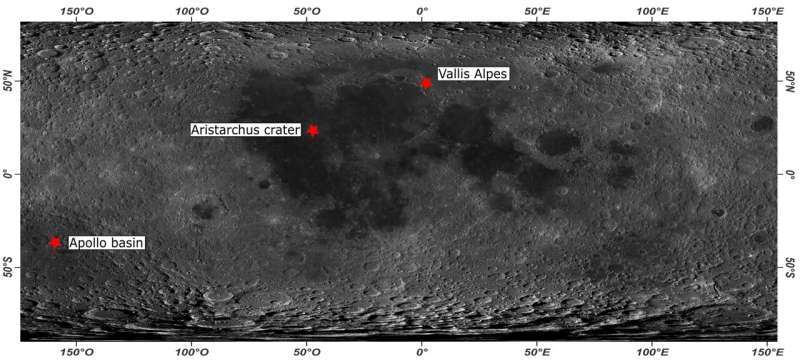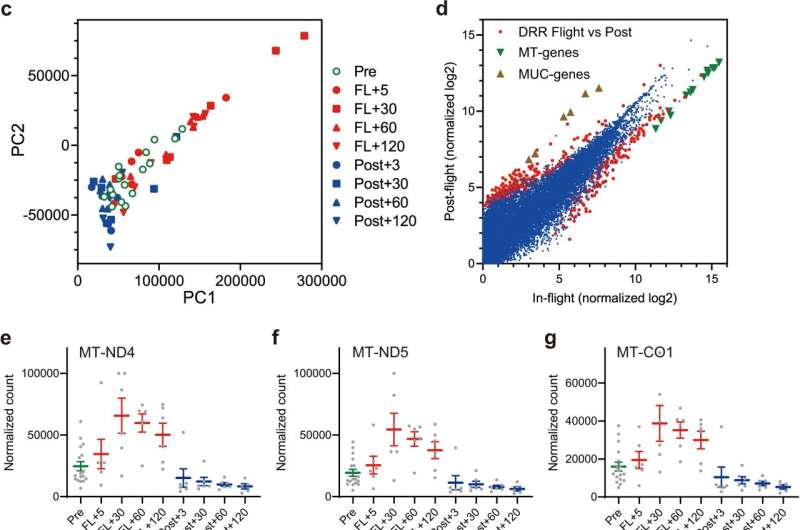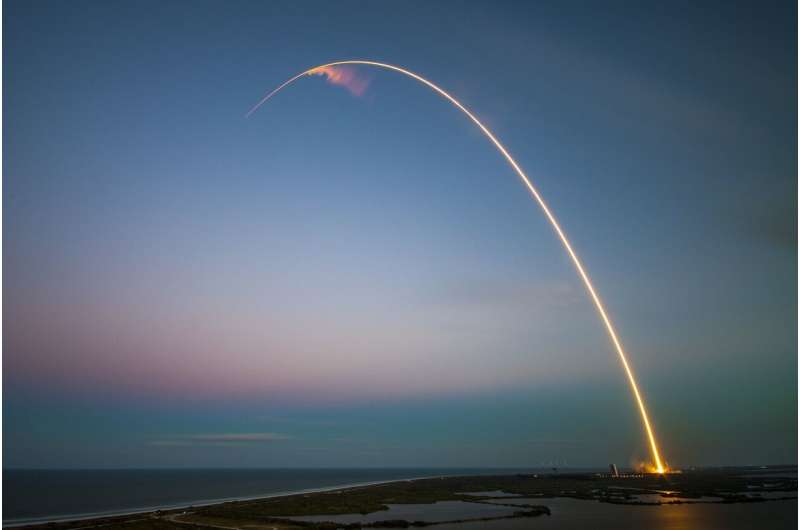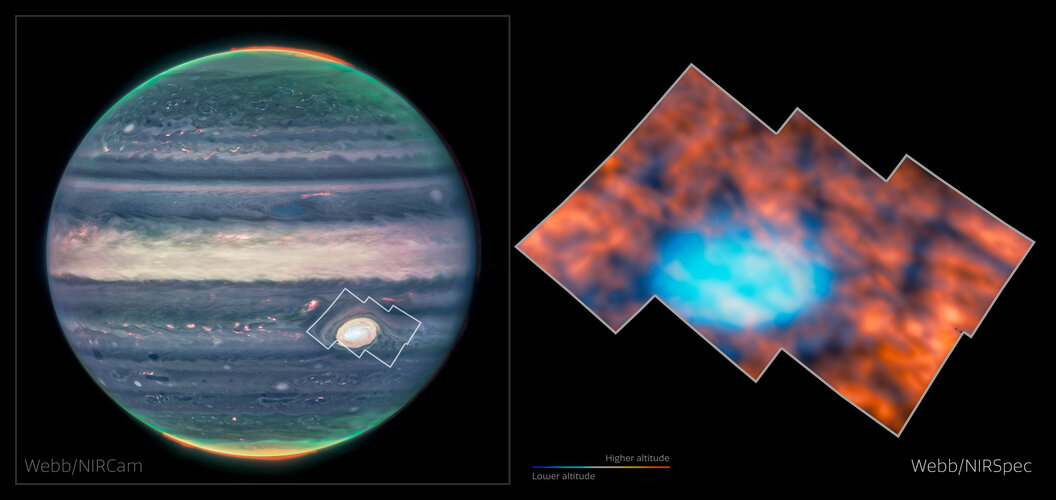Astrobotic reveals lunar surface proving ground for payload testing
Tuesday, 25 June 2024 20:09 Astrobotic has unveiled its Lunar Surface Proving Ground (LSPG) at its Mojave, CA facility. The 100mx100m high-fidelity 3D test field replicates the Moon's surface topography and optical properties.
The LSPG's terrain is based on a map of the Moon's South Pole, scanned by Astrobotic's LunaRay system. This site will support various test campaigns, including precise lunar landing technologie
Astrobotic has unveiled its Lunar Surface Proving Ground (LSPG) at its Mojave, CA facility. The 100mx100m high-fidelity 3D test field replicates the Moon's surface topography and optical properties.
The LSPG's terrain is based on a map of the Moon's South Pole, scanned by Astrobotic's LunaRay system. This site will support various test campaigns, including precise lunar landing technologie Space Force seeks bids for ‘Resilient GPS’ satellite program
Tuesday, 25 June 2024 16:39

Researchers develop MoonIndex, open-source software that allows study of lunar surface
Tuesday, 25 June 2024 14:16
With MoonIndex, researchers from Constructor University and the National Institute of Astrophysics in Italy have developed an open-source software that for the first time gives scientists access to a free tool that creates science-ready products from the Moon Mineralogy Mapper (M3) to study the composition of the lunar surface. It also enables a wide range of applications.
An article now published in the specialist journal Earth and Space Science describes the research success.
"Spectral indices are a key product to understanding and mapping planetary surfaces," said Javier Eduardo Suárez Valencia, Ph.D. student at Constructor University and first author of the article.
Each surface has a very special, individual reflectance pattern, a kind of spectral fingerprint. It provides information about the presence of certain minerals in rocks or about the physical properties of the surface.
The Missing Piece of Satellite’s Multi-Orbit Ambitions: A Big-picture Vision
Tuesday, 25 June 2024 12:00

Predicting changes inside astronauts' bodies during space travel through blood sample analysis
Tuesday, 25 June 2024 11:08
Airbus takes a charge of nearly $1 billion on space programs
Tuesday, 25 June 2024 10:39

Year's 1st SpaceX Falcon Heavy launch on tap Tuesday with NOAA satellite
Tuesday, 25 June 2024 09:10
SpaceX is locked and loaded for what would be only the 10th launch for its powerhouse Falcon Heavy rocket Tuesday, scheduled to take a powerful weather satellite to space if weather cooperates.
The payload is the 11,000-pound GOES-U satellite for NASA and the National Oceanic and Atmospheric Administration, headed to geostationary orbit where next year it will take on the duties of scanning the Atlantic Ocean for tropical threats as well as other dangerous weather affecting the United States.
"GOES-U … will be the sentinel in the sky to keep an eye on hurricanes," said Dan Lindsey, the chief scientist of NOAA's GOES program, during a press conference Monday. It will also continue to scan Central America, the Caribbean and South America as well as add to the lightning and wildfire observation capability in the U.S.
Liftoff is targeted at 5:16 p.m. from Kennedy Space Center's Launch Pad 39-A at the opening of a two-hour window, with a backup during the same window on Wednesday. NASA plans launch broadcast coverage on NASA TV and its social media channels beginning at 4:15 p.m.
Media briefing on Ariane 6’s inaugural flight
Tuesday, 25 June 2024 09:00 Video:
01:00:08
Video:
01:00:08
Watch the replay of the Ariane 6 inaugural flight pre-launch media briefing to learn more about the first flight of Europe’s new heavy lift launch vehicle.
NASA calls off spacewalk after spacesuit water leak
Tuesday, 25 June 2024 07:42
NASA on Monday canceled a spacewalk at the International Space Station after water leaked from an astronaut's spacesuit.
Astronauts Tracy Dyson and Mike Barratt opened the hatch to the space station's airlock when Dyson reported water leaking from her spacesuit's cooling system. The leak occurred when Dyson switched her spacesuit to battery power. The astronauts hadn't floated outside yet.
"There's literally water everywhere here now," Barratt said.
The duo were not in danger, according to NASA.
The astronauts were supposed to remove a faulty communications box and collect microbe samples from outside the orbiting laboratory.
Jupiter’s upper atmosphere surprises astronomers
Tuesday, 25 June 2024 07:00
Using the NASA/ESA/CSA James Webb Space Telescope, scientists observed the region above Jupiter’s iconic Great Red Spot to discover a variety of previously unseen features. The region, previously believed to be unremarkable in nature, hosts a variety of intricate structures and activity.
China lunar probe returns to Earth with samples
Tuesday, 25 June 2024 06:29 A Chinese probe carrying samples from the far side of the Moon returned to Earth on Tuesday, capping a technically complex 53-day mission heralded as a world first.
The landing module of the Chang'e-6 spacecraft touched down at a predetermined site in Inner Mongolia at 2:07 pm (0607 GMT), the China National Space Administration said, hailing the mission a "complete success".
It comes bea
A Chinese probe carrying samples from the far side of the Moon returned to Earth on Tuesday, capping a technically complex 53-day mission heralded as a world first.
The landing module of the Chang'e-6 spacecraft touched down at a predetermined site in Inner Mongolia at 2:07 pm (0607 GMT), the China National Space Administration said, hailing the mission a "complete success".
It comes bea GOES-U Mission Ready for Launch Following Successful Review
Tuesday, 25 June 2024 06:29 NASA and SpaceX have confirmed the GOES-U (Geostationary Operational Environmental Satellite U) mission is ready for launch following a successful readiness review at Kennedy Space Center in Florida.
The launch is scheduled for a two-hour window beginning at 5:16 p.m. EDT on Tuesday, June 25. A SpaceX Falcon Heavy rocket will carry the satellite into orbit from Launch Complex 39A at Kenned
NASA and SpaceX have confirmed the GOES-U (Geostationary Operational Environmental Satellite U) mission is ready for launch following a successful readiness review at Kennedy Space Center in Florida.
The launch is scheduled for a two-hour window beginning at 5:16 p.m. EDT on Tuesday, June 25. A SpaceX Falcon Heavy rocket will carry the satellite into orbit from Launch Complex 39A at Kenned European tech must keep pace with US, China: Meta's Clegg
Tuesday, 25 June 2024 06:29 Europe is lagging behind both the United States and China when it comes to technology and innovation, top executive with US firm Meta Nick Clegg has told AFP.
Clegg, president of global affairs at the parent company of Facebook, Instagram and WhatsApp, said Europe had a "real problem".
"We are falling very rapidly behind the US and China," said Clegg, who was promoting a scheme to mentor
Europe is lagging behind both the United States and China when it comes to technology and innovation, top executive with US firm Meta Nick Clegg has told AFP.
Clegg, president of global affairs at the parent company of Facebook, Instagram and WhatsApp, said Europe had a "real problem".
"We are falling very rapidly behind the US and China," said Clegg, who was promoting a scheme to mentor Hydrothermal Vents on Ocean Worlds Could Support Life, UC Santa Cruz Study Finds
Tuesday, 25 June 2024 06:29 UC Santa Cruz researchers have found that lower-temperature hydrothermal vents, which are common on Earth's seafloor, may create conditions that support life on "ocean worlds" in our solar system.
Ocean worlds are planets and moons with liquid oceans, often under ice or within their rocky interiors. Some of Jupiter's and Saturn's moons are considered ocean worlds. These moons have inspired
UC Santa Cruz researchers have found that lower-temperature hydrothermal vents, which are common on Earth's seafloor, may create conditions that support life on "ocean worlds" in our solar system.
Ocean worlds are planets and moons with liquid oceans, often under ice or within their rocky interiors. Some of Jupiter's and Saturn's moons are considered ocean worlds. These moons have inspired 


